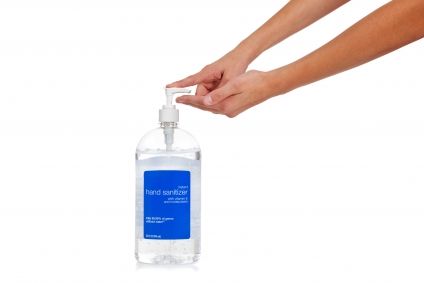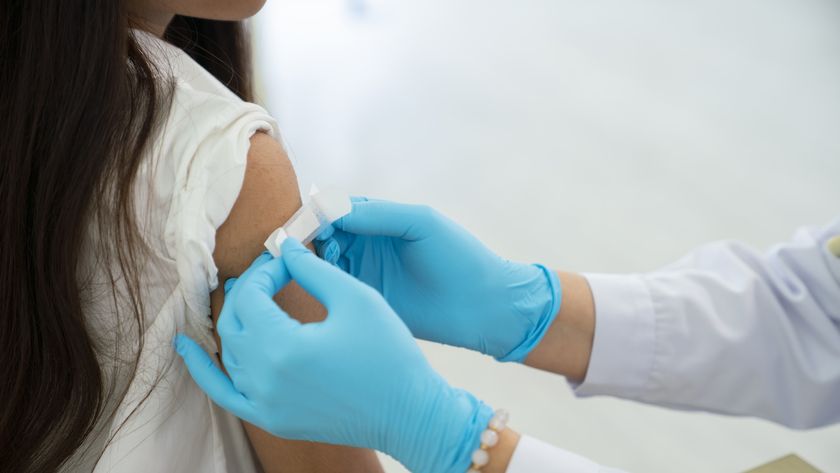Fighting the Flu: Do Hand Sanitizers Work?

With the amount of bottles of alcohol-based hand sanitizer available for public use at hospitals, schools, day-care facilities and malls now outnumbering the billions of viruses and bacteria on even the dirtiest of human hands, you may be wondering if this stuff actually works.
Is it better than hand washing? Does it create mutant strains of alcoholic germs? Might my retirement savings have actually increased had I invested in the makers of Purell last year?
In fact, alcohol-based hand sanitizers are tremendously effective in preventing the spread of the seasonal flu, H1N1, colds and other viral- and bacterial-based diseases; and sales are through the roof.
There are in fact few negative consequences about this hand-sanitizer mania sweeping the country, although the gels do have their limitations.
Wash or squirt?
Most respectable public health experts will tell you that hand washing with ordinary soap and water is the most effective way to remove germs from your hands. But "effective" is a questionable term. The recommendation calls for hand washing with soap and warm water for at least 20 seconds to create a full lather and to reach all crevices of your hands and wrists, as advocated on Sesame Street yet rarely put into practice.
Alcohol-based hand sanitizers kill most types of bacteria, viruses and fungi in a few seconds. While rubbing your hands with sanitizer for 15 seconds is ideal, poor hand-sanitizer use still beats poor hand washing.
Sign up for the Live Science daily newsletter now
Get the world’s most fascinating discoveries delivered straight to your inbox.
And people seem to use hand sanitizers often — so much so that, from a public health standpoint, although proper hand washing is technically superior than alcohol gels most of the time, hand-sanitizer mania will likely be a more effective means to reduce disease transmission. Studies have shown how hand sanitizers reduce gastrointestinal illnesses in households and curb absentee rates in schools and workplaces.
Trash the sink?
Alas, you can't rely solely on alcohol-based hand sanitizers. Alcohol can kill bacteria but not necessarily clean your hands. That is, it does not remove dirt, which includes organic material such as blood or feces. Soap and water must be the first choice in restrooms.
Also, there are a few key germs that alcohol doesn't kill well, such as the norovirus or E. coli, which is why soap and water is best during cooking, too.
Alcohol-based hand sanitizers are best precisely where you see them the most, in hallways, offices and other public areas. They can rid your hands of germs you just picked up before you inadvertently shove them into your body via your nose, mouth or eyes.
Alcohol kills bacteria usually by dissolving its cellular membrane. It's a serious killer, like fire or bleach, and germs don't develop resistance to it. Also, the alcohol evaporates quickly after killing the first layer or so of germs on your skin. This means that, although benevolent bacteria are killed, enough remain on lower levels or elsewhere up the arm to re-colonize. Fast evaporation, coupled with moisturizers, also means this won't dry out your skin.
Anti-bacterial soap, ironically, is largely considered the worse thing you can use to kill germs. This is because antibacterial agents kill many but not all bacteria and then linger on the skin to enable the remaining bad bacteria to develop a resistance.
Watch out for the cheap stuff
To be effective, alcohol-based hand sanitizers must contain at least 60 percent alcohol. Some cheaper brands contain less and are no better than water. Worse, they offer false protection.
Sixty percent pure alcohol can pack a punch if ingested. Fortunately, as reported in the American Journal of Emergency Medicine in 2006, even hospital workers using hand sanitizers all day long do not absorb discernable levels of alcohol into their blood.
There is a small risk that a child could drink or lick an alcohol-based hand sanitizer. That's something parents and teachers need to monitor. Only a few reports of poisonings have been reported. Even alcoholics will have a rough time abusing this because the gels taste rather bad. I prefer not to reveal how I know.
- Fear the Flu? Don a Mask
- The Common Cold: Myths and Facts
- Video - All About the Flu
Christopher Wanjek is the author of the books "Bad Medicine" and "Food At Work." His column, Bad Medicine, appears each Tuesday on LiveScience.

Christopher Wanjek is a Live Science contributor and a health and science writer. He is the author of three science books: Spacefarers (2020), Food at Work (2005) and Bad Medicine (2003). His "Food at Work" book and project, concerning workers' health, safety and productivity, was commissioned by the U.N.'s International Labor Organization. For Live Science, Christopher covers public health, nutrition and biology, and he has written extensively for The Washington Post and Sky & Telescope among others, as well as for the NASA Goddard Space Flight Center, where he was a senior writer. Christopher holds a Master of Health degree from Harvard School of Public Health and a degree in journalism from Temple University.











